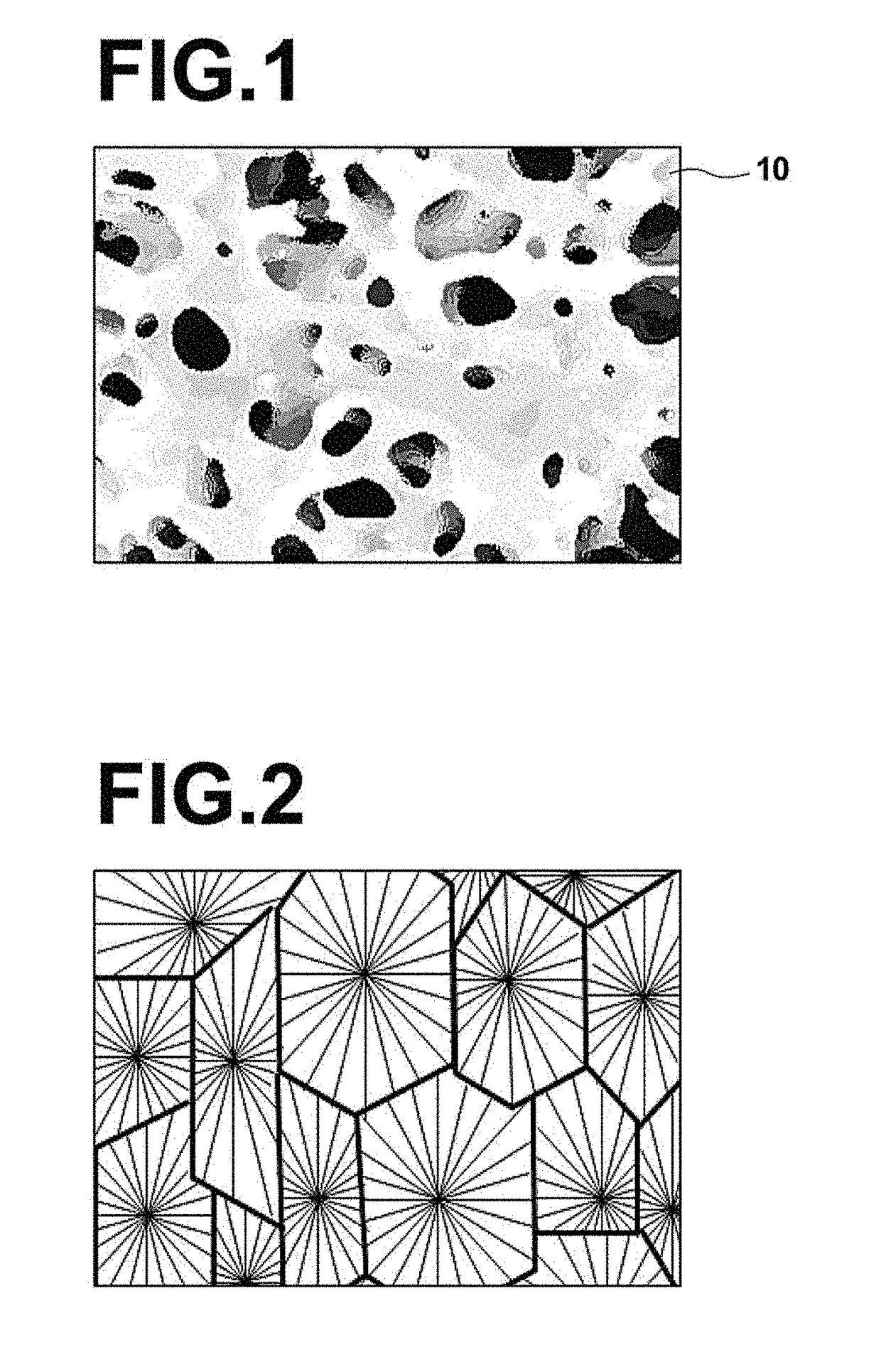Porous hollow fiber membrane, method for producing the same, and filtration method
a technology of porous fiber and hollow fiber, which is applied in the direction of membranes, membrane technology, chemistry apparatus and processes, etc., can solve the problems of practical use durability problems, and achieve the effects of good pore formability, high chemical resistance and mechanical strength
- Summary
- Abstract
- Description
- Claims
- Application Information
AI Technical Summary
Benefits of technology
Problems solved by technology
Method used
Image
Examples
example 1
[0184]A melt-kneaded product was extruded using a spinning nozzle having a double tube structure to obtain a porous hollow fiber membrane of Example 1.
[0185]The melt-kneaded product was prepared using 40 mass % of PVDF resin (KF-W#1000, available from Kureha Corpolation) as the thermoplastic resin, 23 mass % of fine powder silica (primary particle size: 16 nm), and 32.9 mass % of bis(2-ethylhexyl) adipate (DOA, boiling point 335° C.) and 4.1 mass % of acetyl tributyl citrate (ATBC, boiling point 343° C.) as the solvent, The temperature of the melt-kneaded product was about 200° C. to 250° C.
[0186]The hollow fiber extrudate passed through a free running distance of 120 mm was then solidified in water at 30° C. to produce a porous hollow fiber membrane by the thermally induced phase separation process. The hollow fiber extrudate was taken up on a reel at a speed of 5 m / minute. The thus obtained double layer hollow fiber extrudate was immersed in isopropyl alcohol to extract and remove...
example 2
[0188]A porous hollow fiber membrane was produced in the same manner as in Example 1, except that the melt-kneaded product was prepared using 4.1 mass % of dibutyl sebacate (DBS, boiling point 345° C.) as the solvent in place of 4.1 mass % of acetyl tributyl citrate (ATBC, boiling point 343° C.).
[0189]The formulation, production conditions, and various performances of the obtained porous hollow fiber membrane of Example 2 are shown in Table 1. The membrane structure of this porous hollow fiber membrane exhibited a three-dimensional network structure, such as one shown in FIG. 1.
example 3
[0190]A porous hollow fiber membrane was produced in the same manner as in Example 1, except that the melt-kneaded product was prepared using 32.9 mass % of diisononyl adipate (DINA, boiling point 250° C. or more) as the solvent in place of 32.9 mass % of bis(2-ethylhexyl) adipate (DOA, boiling point 335° C.).
[0191]The formulation, production conditions, and various performances of the obtained porous hollow fiber membrane of Example 3 are shown in Table 1. The membrane structure of this porous hollow fiber membrane exhibited a three-dimensional network structure, such as one shown in FIG. 1.
PUM
| Property | Measurement | Unit |
|---|---|---|
| tensile elongation at break | aaaaa | aaaaa |
| tensile elongation at break | aaaaa | aaaaa |
| temperature | aaaaa | aaaaa |
Abstract
Description
Claims
Application Information
 Login to View More
Login to View More - R&D
- Intellectual Property
- Life Sciences
- Materials
- Tech Scout
- Unparalleled Data Quality
- Higher Quality Content
- 60% Fewer Hallucinations
Browse by: Latest US Patents, China's latest patents, Technical Efficacy Thesaurus, Application Domain, Technology Topic, Popular Technical Reports.
© 2025 PatSnap. All rights reserved.Legal|Privacy policy|Modern Slavery Act Transparency Statement|Sitemap|About US| Contact US: help@patsnap.com

